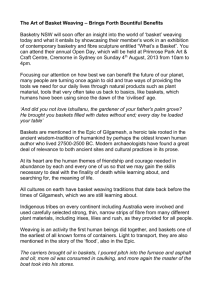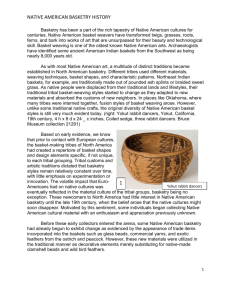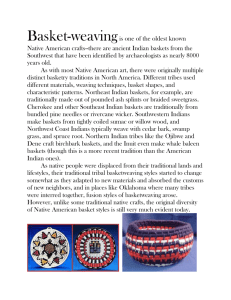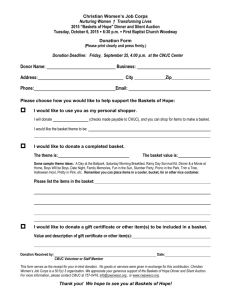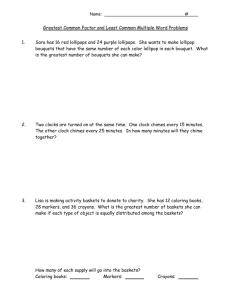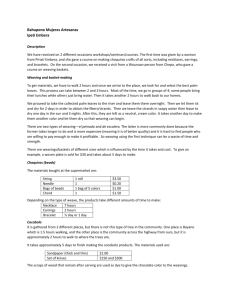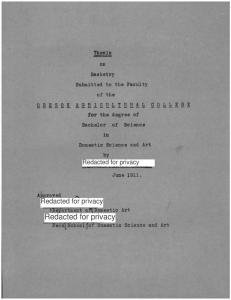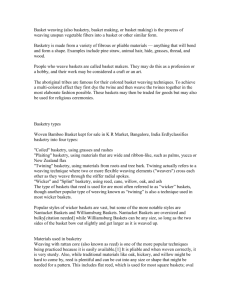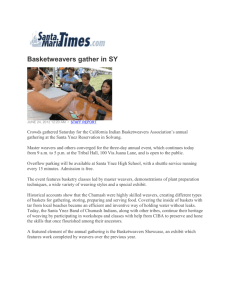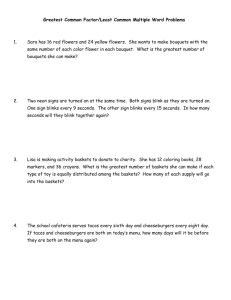Coil Basket Weaving: Grade 8 Arts Planning Guide
advertisement
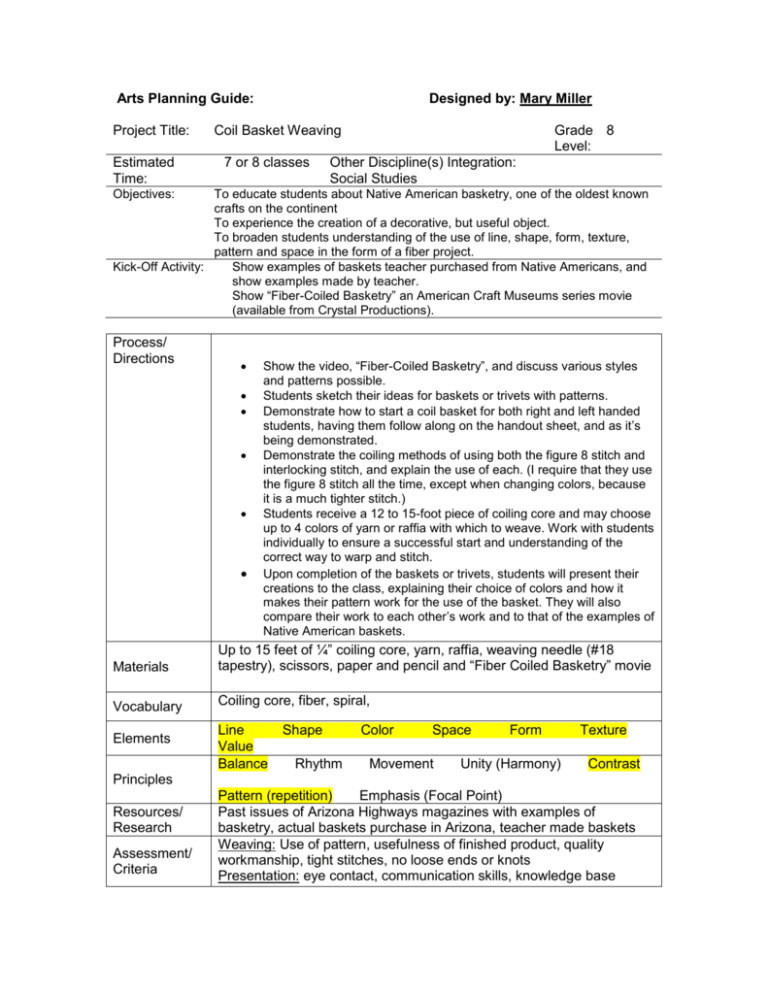
Arts Planning Guide: Project Title: Estimated Time: Designed by: Mary Miller Coil Basket Weaving 7 or 8 classes Grade 8 Level: Other Discipline(s) Integration: Social Studies Objectives: To educate students about Native American basketry, one of the oldest known crafts on the continent To experience the creation of a decorative, but useful object. To broaden students understanding of the use of line, shape, form, texture, pattern and space in the form of a fiber project. Kick-Off Activity: Show examples of baskets teacher purchased from Native Americans, and show examples made by teacher. Show “Fiber-Coiled Basketry” an American Craft Museums series movie (available from Crystal Productions). Process/ Directions Show the video, “Fiber-Coiled Basketry”, and discuss various styles and patterns possible. Students sketch their ideas for baskets or trivets with patterns. Demonstrate how to start a coil basket for both right and left handed students, having them follow along on the handout sheet, and as it’s being demonstrated. Demonstrate the coiling methods of using both the figure 8 stitch and interlocking stitch, and explain the use of each. (I require that they use the figure 8 stitch all the time, except when changing colors, because it is a much tighter stitch.) Students receive a 12 to 15-foot piece of coiling core and may choose up to 4 colors of yarn or raffia with which to weave. Work with students individually to ensure a successful start and understanding of the correct way to warp and stitch. Upon completion of the baskets or trivets, students will present their creations to the class, explaining their choice of colors and how it makes their pattern work for the use of the basket. They will also compare their work to each other’s work and to that of the examples of Native American baskets. Materials Up to 15 feet of ¼” coiling core, yarn, raffia, weaving needle (#18 tapestry), scissors, paper and pencil and “Fiber Coiled Basketry” movie Vocabulary Coiling core, fiber, spiral, Elements Line Value Balance Shape Rhythm Color Space Movement Form Unity (Harmony) Texture Contrast Principles Resources/ Research Assessment/ Criteria Pattern (repetition) Emphasis (Focal Point) Past issues of Arizona Highways magazines with examples of basketry, actual baskets purchase in Arizona, teacher made baskets Weaving: Use of pattern, usefulness of finished product, quality workmanship, tight stitches, no loose ends or knots Presentation: eye contact, communication skills, knowledge base
